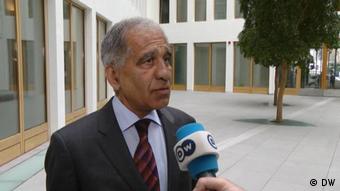A violent storm with heavy rain in Germany: flooded basements, so a lot of rain in a day in a month. And climate experts say It has to get used to Germany.

For the second Time within a month, the authorities call on the weekend in Berlin, a state of emergency. Heavy rain had put the roads under water, some meters high. The fire brigade of the capital was not the emergency calls Lord. According to a newspaper report, the fire brigade had to move out within one and a half hours 185 Times. And in the lake Constance region, the storm raged in such a way that Railways had to be closed because of fallen trees or collapsed mountain slopes.
Faster exchange of heat and heavy rain
These are conditions that the Germans must get used to the view of climate researchers. The greenhouse effect is not only the icebergs are melting and the sea levels to rise, he always has a greater impact on Central Europe. “We have said that the fast exchange of hot drought and heavy rains long before that, now the from year to year more apparent,” says Mojib Latif,

Climate Researcher Mojib Latif
Meteorologist and climate researcher at the GEOMAR Helmholtz centre for ocean research in Kiel, DW. “In Germany, the average temperature has not risen since about the 1880’s by 1.4 degrees, which remains without consequences.” On the one hand, the subtropical Azores high of the North Atlantic is on the rise due to global warming, but also the lows remained in Europe. “And with every degree of temperature increase in the possible rain intensity increases to seven percent,” says Latif. Also, the weather stations have measured for a long time, only the amounts of rain over many days and weeks. But the Problem is the many short, heavy rains are now. “There is sufficient measurement missing data for exact forecasts”. But generally applies: Warmer air can hold more water, rainfall will be more intense.
The Arctic is warming faster than other regions
Statements, which is also confirmed by the meteorologist Peter Hoffmann, from Potsdam-Institute for climate impact research (PIK).

Climate Researcher Peter Hoffmann
“The Arctic warms due to climate change more than other regions, the change the ratio of low and High, and their storm tracks over Central Europe,” says Hoffmann of the DW. “And now we have a Low over Central Europe, which remains there for several days and the heavy rains caused.” Hoffmann also points to a different context: If in Central Europe, so much rain falls as is currently the case, contributes to the extreme drought in the South of the continent.
Rain in Central Europe drought in the South
So the authorities in Rome have failed because of extreme water shortage alert. The Italian capital is being sought by high temperatures and extreme drought. The managers even consider a by the hour shutdown of the water supply in a private house, after the level of the Braccianer lake, a main reservoir for drinking water, 160 centimetres below the Normal level has decreased.

Here, still water: At St. Peter’s square in Rome.
And the Vatican was due to the scarcity of water in both the fountain on the St. Peter’s square, as well as the fountains in the Vatican gardens.
Both climate scientists stress that Even with the best climate policy must live in Central Europe for the First with such weather scenarios: “the switch does not kill,” says Hoffmann. And Latif says: “Although the climate is often also a chaotic System. But on heavy rain and great drought in the fast changing, we must prepare ourselves for the time being.”